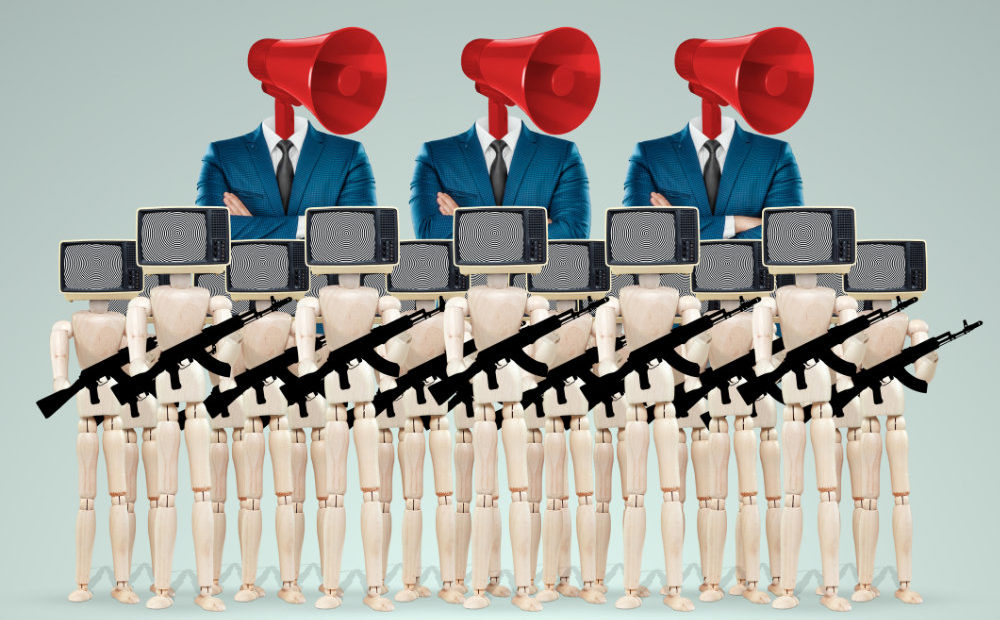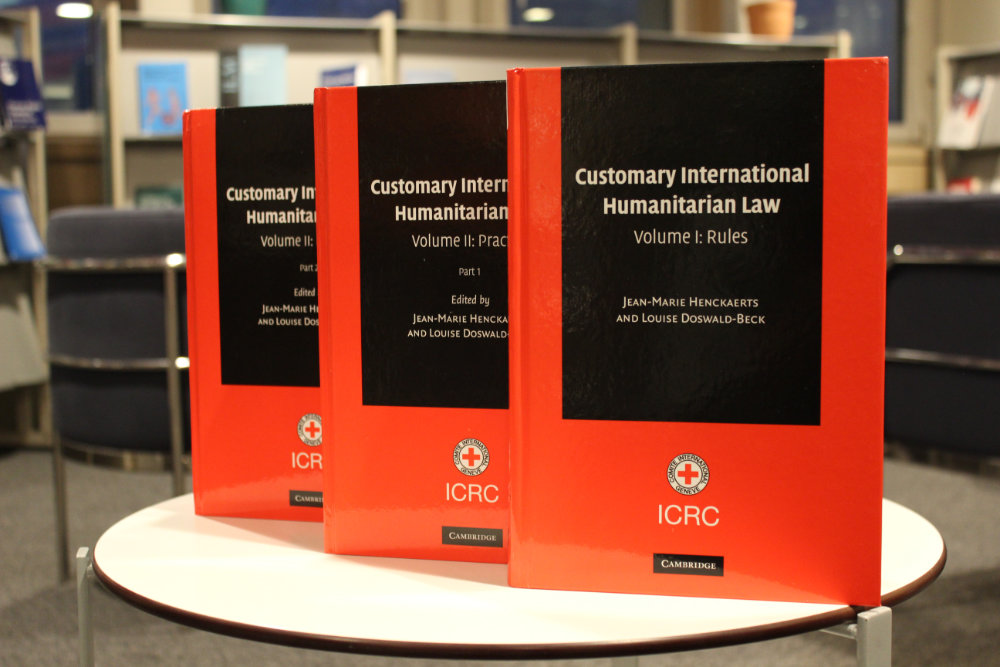During armed conflict and other situations of violence, timely access to reliable information can save lives. Affected people need to know where danger and risks come from, how and where they can find assistance, and how to protect themselves and access needed services. At the same time, the information dimensions of conflict have become part of the digital frontlines, where harmful information can spread at greater scale, speed, and reach than ever before. The information space can be riddled with narratives that distort facts that are essential for people to make decisions regarding shelter or their security, that undermine humanitarian operations, or that influence people’s behavior, fueling polarization and hate speech or triggering or inciting violence against civilian populations.
The International Committee of the Red Cross (ICRC) is concerned that the spread of misleading or hateful narratives may undermine the protection and safety of people affected by armed conflict and other situations of violence. The ICRC focuses on the potential for harmful effects resulting from the distortion of information or the absence of reliable information. In this post, ICRC Digital Risks Adviser Joelle Rizk presents four risks associated with the spread of harmful information in situations of armed conflict and elaborates on the ICRC approach that focuses on addressing its harmful effects on people.
It is not only bullets and rockets that harm people in war. Information – its absence or its manipulation – is part and parcel of the theatre of war and can lead to serious consequences on people affected. Civilian casualties, displacement, trauma and injury can result from the spread of information that triggers or amplifies harmful behaviors; some of which might violate international human rights and humanitarian law.
In situations of armed conflict or violence, the spread of misleading or hateful narratives may undermine the protection and safety of people including children, refugees, the displaced, minorities, and victims of violence. The effects on people are a true humanitarian concern. Harmful information can increase people’s vulnerabilities and their exposure to risk during situations of armed conflict or violence. These effects come in addition to other consequences, such as loss of life, injury and property destruction that occur as a result of hostilities and violence.
To address these consequences in ways that are specific to situations of armed conflict and violence, it is important to understand four serious risks associated with the spread of harmful information:
- Serious humanitarian consequences on people. Harmful information can harm people’s physical, psychological, economic and social well-being. People can be deprived of or misdirected away from life-saving information or services or led into making decisions increasing their exposure to physical harm. Some people might become targets of violent acts, harassment, defamation and/or intimidation. They may become isolated or subjected to discrimination and dehumanization, jeopardizing their sense of dignity.
- Fueling hatred, violence and conflict. As harmful information spreads, it can fuel hatred and polarization, trigger unrest and encourage violence. In times of war, escalatory and hateful narratives undermine people’s protection and resilience and can become a driver of conflict or jeopardize opportunities for conflict resolution, peace and reconciliation.
- Undermining IHL and other legal frameworks. In addition to unlawful speech or information operations, the spread of harmful information may lead to violations of international law. Harmful information may influence the behavior of arms bearers – for instance it may fuel violence towards, or dehumanization of the adversary – and make it less likely that they comply with IHL and other legal frameworks. Without appropriate safeguards in place, some efforts to limit the spread of information may in fact cause additional harm, infringing further on individual rights such as the right to freedom of expression.
- Undermining trust, acceptance and safety of humanitarian workers. The spread of false and manipulated information about humanitarian organizations, staff and volunteers or their mandates and principles erodes people’s trust in their activities and motivations, including in terms of neutrality and independence. Information campaigns targeting one organization can also have ripple effects and undermine the space for principled humanitarian action by others. This can also lead to threats and attacks against humanitarian workers, both online and offline.
For these reasons, the ICRC views the spread of information that may lead to injury, displacement and suffering, or that might undermine the respect of international humanitarian law, as “harmful information”. The ICRC considers such information as a significant conflict issue with serious risks of humanitarian consequences and impact. In armed conflict, accessing reliable information at the right time can make the difference between life or death. Though there is no internationally agreed upon definition of the concept, the term “harmful information” is used by the ICRC to define all types of information that can lead to physical, psychological, economic or social harm.
Harmful information includes misinformation (false information unintentionally spread by individuals who believe the information to be true), disinformation (false information intentionally disseminated with malicious intent or for economic gain), and malinformation (true information intentionally spread to gain tactical advantage or effect harm). Under this description, hate speech and hateful narratives that may not be unlawful but are likely to be harmful are also considered harmful information. This term allows to focus on the potential for harm; as such, it includes escalatory narratives, and narratives that undermine respect for international protective frameworks, or narratives targeting people protected by international law.
For further research on this subject, see Bailey Ulbricht, Joelle Rizk, How harmful information on social media impacts people affected by armed conflict: A typology of harms, International Review of the Red Cross, No. 926, August 14, 2024.
Why does the ICRC focus on harm?
In the ICRC’s approach to addressing this issue, the focus is on the risk of harm rather than on the technical categorization of the various forms of information and speech that may (or not) be prohibited.
- In situations of tension, polarization and division related to violence and conflict, it is often the case that one person’s disinformation is another person’s belief. As such, harmful information is both a driver and a symptom of conflict that is attached to political considerations or objectives. Disinformation thrives on cognitive and emotional biases. During armed conflict and other situations of violence, people’s grievances, world views and beliefs remain crucial to their identity and sense of dignity, and instrumental to their decisions and behavior.
- The politicization of the issue of disinformation and information manipulation means that humanitarian organizations have been brought at the heart of political games and power struggles. Policy decisions oriented toward “countering” and “combating” the issue can in practice lead to increased polarization and divisions, potentially reinforcing harmful beliefs and opinions instead of preventing and mitigating them. Similarly, and despite their relevance and legitimacy, “whole-of-society” approaches led by governments and other politically motivated actors may result in additional pressure on civil society and humanitarian actors to implement state-driven policies and approaches. This might jeopardize their independence, and potentially compromise their contribution to effective responses to the issue.
- Speech is regulated by international law, which is not necessarily based on the veracity of information. While international humanitarian law does not define “harmful information”, it regulates the use of information by parties to conflict and protects the life and dignity of affected persons. At the same time, “harmful information” is not always unlawful. Be it propaganda, information operations, or other forms of spreading or disseminating information aiming at deceiving the adversary or influence populations; these are not necessarily prohibited in and of themselves – be it some form of disinformation to support military operations or achieve strategic aims. But IHL does impose clear limits on information operations during armed conflict. Some of these limits relate to information operations that encourage unlawful forms of violence, to the propagating of information regarding recruitment of children, publishing images of prisoners of war, intentionally spreading fear and terror, or obstructing and undermining humanitarian operations.
Focusing on the harm rather than on the veracity or terminological categorization of information allows for the development of approaches that are more integral and inclusive of the multidimensional risks attached to it. A conflict-specific approach reflects the complex realities and vulnerability of people affected by war and violence, as well as their need to access reliable information and to safeguard their fundamental rights. While trying to address the impact of harmful information, it is important that states, civil society actors and humanitarian organizations ensure that people are resilient and able to self-protect – through media and digital literacy, the promotion of critical thinking and localized approaches that accommodate grievances, beliefs and other psychological and emotional biases.
In addition, focusing on preventing and mitigating negative impact allows all stakeholders to promote engagement with the communities they serve, and improve connectivity and access to reliable information while avoiding the risks of political instrumentalization. States, social media platforms, media and journalists, civil society actors, and humanitarian organizations all have different but complementary roles to play in providing, promoting and amplifying information that is factual, reliable, and necessary for people’s safety and dignity in times of crisis. This includes encouraging policies that facilitate and enable connectivity rather than counterproductive ones that focus on shutting or slowing down internet access or restricting other means of information and communications.
Finally, times of war and unrest often bring a surge of public – and sometimes official – narratives and statements that may undermine respect for IHL and other legal frameworks protecting individual rights. In situations where the risk of negative sentiments and violence are heightened, the information environment may indirectly encourage unlawful acts against people and jeopardize their sense of dignity; challenge states’ ability to ensure respect for IHL by belligerents; and impede humanitarian action or infringe on human rights. Understanding how physical, psychological and societal harm may materialize through the information space can enable a better understanding of risks for the safety and dignity of people affected by conflict, and support dialogue and advocacy that can prevent or address their consequences on people and society.
All relevant stakeholders, including states, the private sector (including tech companies), civil society and humanitarian organizations should uphold their obligations or responsibilities, and design responses that effectively address the spread of harmful information, improve people’s access to reliable information, and mitigate the negative effects of harmful information on the safety and dignity of affected populations and on principled humanitarian action.
See also:
- Bailey Ulbricht, Joelle Rizk, How harmful information on social media impacts people affected by armed conflict: A typology of harms, International Review of the Red Cross, No. 926, August 14, 2024
- Natalie Deffenbaugh, De-dehumanization: practicing humanity, June 27, 2024
- Chris Brew, From content to harm: how harmful information contributes to civilian harm, February 27, 2024
- Tilman Rodenhäuser, Samit D’Cunha, Foghorns of war: IHL and information operations during armed conflict, October 12, 2023






Comments